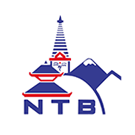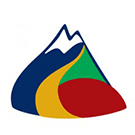Hot Water Showers on the Annapurna Circuit: Everything You Need to Know
When trekking the Annapurna Circuit, you might wonder about the availability of hot water showers on the Annapurna Circuit. The answer is yes, but it depends on your location and altitude. Most teahouse lodges along the circuit offer hot water showers, powered by solar, electric, or gas heating. However, in higher-altitude or remote areas, you might only have access to bucket showers.
Where to Find Hot Water Showers on the Annapurna Circuit
While most teahouses on the Annapurna Circuit provide hot water showers, the options become fewer as you climb higher. Lower-altitude villages generally offer solar or electric showers. As you ascend, hot water showers may be unavailable, and bucket showers will likely become the norm. Expect the price to increase as you reach higher altitudes due to the difficulty of heating the water.
Costs of Hot Water Showers
On average, the cost of a hot water shower on the Annapurna Circuit is around NPR 300, but prices may increase at higher altitudes. The reason for this is that heating water at high altitudes can be more challenging and resource-intensive. As such, you might find that the higher you trek, the more expensive the shower becomes.
What About Hot Water Showers in Remote Villages?
In high and remote villages along the Annapurna Circuit, hot water showers are often unavailable. These areas have limited infrastructure. You’ll likely rely on bucket showers, or you may have to go without a shower for a day or two. When hot water showers are unavailable, it’s wise to bring alternative methods for staying clean. Wet wipes, dry shampoo, and antibacterial wipes are handy alternatives that can help you freshen up during your trek. Carrying a small towel and extra hygiene supplies will also ensure you remain comfortable, even when shower facilities are scarce.
Tips for Trekking with Limited Shower Access
While hot water showers on the Annapurna Circuit may not always be available, there are several ways to stay clean and comfortable during your trek:
-
-
Pack Wet Wipes: Wet wipes are a great alternative when hot water showers are unavailable. They allow you to clean up quickly and stay fresh without needing a shower.
-
Bring Quick-Dry Clothing: Quick-dry clothes are perfect for trekking, as they dry faster if they get damp. This helps keep you comfortable even if you don’t have access to a shower every day.
-
Stay Hydrated: Keeping hydrated not only helps with acclimatization but also improves your overall hygiene. Drinking water regularly will help keep your skin healthy and hydrated.
-
For more information, contact Nepal Sanctuary Treks expert. We are one of the few Travelife Certified trekking companies in Nepal.










